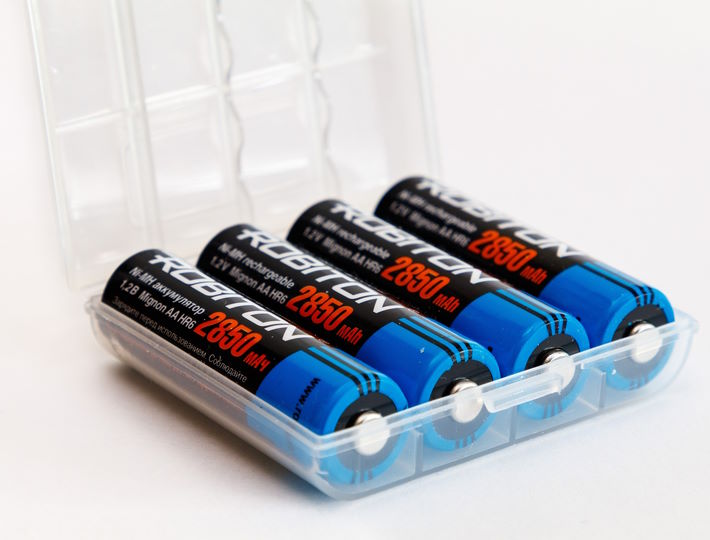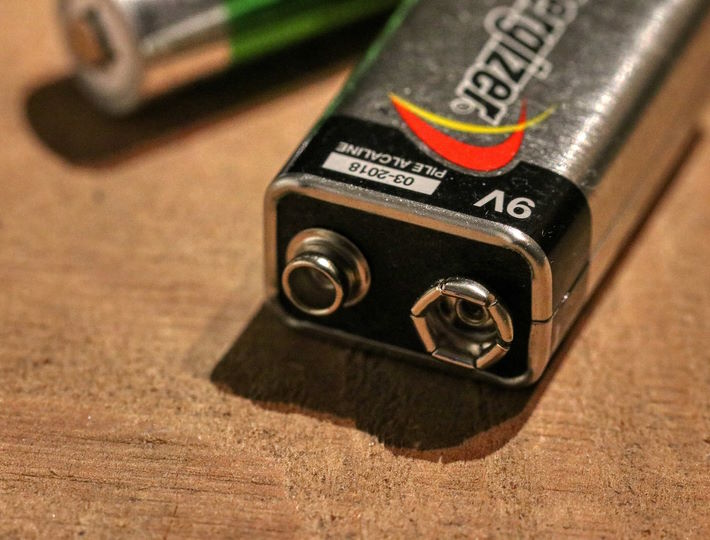Introduction
When it comes to choosing the right battery for your device, it is important to make sure that it is compatible with the device and that it has the right amount of power and voltage. It is also important to make sure that the battery you choose is of good quality. Low-quality batteries will not provide the same performance as higher-quality batteries, and may also damage the device.
When it comes to purchasing a battery, it is important to do your research and choose a battery that has been tested and is certified for use with the device. It is also important to check the warranty and service options for the battery.
It is important to note that some batteries may not be compatible with all devices. For example, some batteries may work with one type of device but not another. It is therefore important to check the compatibility of the battery with your device before making a purchase.
Finally, it is important to remember that the right battery can help extend the life of your device. A quality battery can provide the device with the power it needs to run efficiently and effectively. This in turn can help to extend the life of the device and save you money in the long run.
Understanding the Key Factors to Consider When Selecting a Battery
When selecting a new battery for a device, there are several factors to consider. These include voltage, current, capacity, and type.
- Voltage: This is the amount of electrical pressure that can be applied to the battery. Generally, the higher the voltage, the more power the battery will be able to provide to the device.
- Current: This is the amount of current (or power) that the battery can provide at a given time. This is usually measured in milliamps (mAh).
- Capacity: This is the amount of energy the battery can store. This is usually measured in milliamp-hours (mAh).
- Type: This is the type of battery being used. There are several common types such as lithium-ion (Li-Ion), nickel-cadmium (NiCd) and nickel-metal hydride (NiMH).
These four key factors should be taken into account when selecting a new battery for a device. Each type of battery has its own advantages and disadvantages and the right one should be chosen based on the specific needs of the device.
Evaluating the Power Needs of Your Device to Determine the Right Battery Type
When selecting a battery for a device, it is important to consider the amount of power it will need to operate. A battery that is too powerful may cause problems, as it will be more expensive and may be heavier than necessary. A battery that is too weak may not provide enough power for the device to operate.
To determine the right battery type, it is important to first identify the amount of power the device will need. This can be achieved by looking at the device’s specifications or by measuring the power usage of the device while it is in use. Once this is done, it is then possible to choose a battery that is able to provide the necessary power without being too large or expensive.
For rechargeable batteries, it is also important to look at the battery’s capacity. This will tell how much power the battery can store, and for how long it can provide the necessary power for the device. Most rechargeable batteries will also have a maximum discharge rate, which should also be taken into consideration when selecting the right battery.
Examining the Different Types of Battery Technology and their Advantages and Disadvantages
Batteries are an essential part of life in many aspects. Batteries can be found in almost every modern device, from smartphones to laptop computers, from electric cars to remote control toys. There are many different types of battery technologies available, each with its own advantages and disadvantages. Here are some of the most common types of battery technology and their advantages and disadvantages.
- Lead-acid batteries: Lead-acid batteries are the oldest type of rechargeable battery and are the most common type of battery used in automobiles. Lead-acid batteries are inexpensive and reliable, but have a relatively short lifespan and require regular maintenance. They also contain hazardous materials, which makes them difficult to dispose of in an environmentally friendly way.
- Lithium-ion batteries: Lithium-ion batteries are the most common type of rechargeable battery used in consumer electronics. They are lightweight and powerful, with long shelf lives and relatively low maintenance requirements. However, they can be expensive and can be dangerous if not used correctly.
- Nickel-cadmium batteries: Nickel-cadmium batteries are a type of rechargeable battery that is reliable, inexpensive, and versatile. They do not contain hazardous materials and are simple to maintain, but are also heavy and have a relatively short lifespan.
- Nickel-metal hydride batteries: Nickel-metal hydride batteries are similar to nickel-cadmium batteries in many ways, but are more environmentally friendly as they do not contain hazardous materials. However, they are more expensive and have a shorter lifespan.
- Alkaline batteries: Alkaline batteries are the most common type of non-rechargeable battery. They are inexpensive, versatile, and reliable, but have a relatively short lifespan and cannot be recharged.
Determining the Right Battery Capacity for Your Device
The right battery capacity for any device depends on a few factors. The type of device, its purpose, and its intended usage are all important considerations. The battery capacity should be chosen based on how much power the device will use, how often it will be used, and how long it needs to last. For example, a laptop used for long periods of time may require a larger battery capacity than a smartphone used for short periods.
When determining the right capacity for a device, it is important to take into account the device power usage. The device power usage includes the amount of power the device consumes and the type of power it uses. Power requirements should be checked for the device to ensure that it uses the right type of power and the right amount. Also, the battery capacity should be chosen in accordance with the power usage of the device.
In addition to the power usage, the usage duration and frequency should be taken into account when choosing the right battery capacity. For example, if the device will be used for long periods of time then a higher capacity battery should be chosen to ensure that the device has enough power to last the desired amount of time. Also, the battery capacity should be chosen based on the frequency at which the device will be used.
Assessing the Battery Life Expectancy and its Impact on Your Device
Battery life expectancy is critically important when considering a device. A battery’s life expectancy varies with usage, but on average a battery’s life expectancy will last around 500 charge cycles. A charge cycle is defined as 100% battery usage until the device needs to be recharged, meaning if the battery’s capacity is 2400mAh, then 2400mAh of charge needs to be used before the device needs to be recharged. Additionally, battery life expectancy is adversely affected by high temperatures, which can cause the battery to degrade faster.
The battery life expectancy of a device is a critical factor that needs to be considered before purchasing any electronic device. Understanding the battery life expectancy of a device will help determine the device’s lifespan and allow a customer to make an informed decision. A device with a higher battery life expectancy will last longer, but tend to cost more. Furthermore, a battery’s lifespan can be extended by following these few tips: keeping the device out of extreme temperatures, using the device in optimal settings, and avoiding overcharging the device.
Taking into Account Environmental Factors When Choosing a Battery
When choosing a battery it is important to take into account environmental factors. Batteries generate waste and can contain hazardous substances that can harm ecosystems and human health. Lead-acid car batteries and alkaline batteries are the two types of batteries most commonly used.
Lead-acid car batteries are widely used for transportation purposes, but their lead content makes them hazardous for the environment. Lead is a neurotoxin and exposure to high levels of lead can lead to serious physical and cognitive impairments. Disposing of lead-acid car batteries correctly is important, and it is important to choose a battery recycling center that is certified by the government to make sure it is disposed of correctly.
Alkaline batteries are usually composed of zinc, manganese, and steel and although they are not as hazardous as lead-acid car batteries, they can still be dangerous to the environment. Alkaline batteries contain heavy metals that can contaminate water and soil, and they can also contain corrosive materials that can be damaging if released into the environment. Thus, alkaline batteries should also be recycled correctly to help protect the environment.
Understanding the Importance of Battery Safety Features and How to Evaluate Them
Lithium-ion batteries are widely used in our everyday lives, from the laptop or tablet you use to the electric car you drive. To ensure the safety of battery-powered devices, it is important to understand the available safety features and how to evaluate them. Battery safety features include built-in protection circuits, temperature control, and overcharge protection.
Protection circuits are typically responsible for limiting the current and voltage of lithium-ion batteries. This helps prevent dangerous events like overcharging, overheating, and short-circuiting. Temperature control is also an important part of battery safety. Most lithium-ion cells have a charge temperature range of 0°C to 45°C. Overcharging protection is also a critical safety feature to consider when evaluating lithium-ion batteries. Overcharging can cause the battery to permanently lose capacity and become a fire hazard.
When evaluating the safety features of a lithium-ion battery, it is important to consider the protection circuits, temperature control, and overcharge protection. Additionally, it is important to ensure that the battery is certified by a reputable safety standards organization, such as UL or CE. By understanding the safety features of lithium-ion batteries and how to evaluate them, you can ensure your device is safe.
Balancing the Cost of the Battery with its Quality and Performance
When shopping for a battery, the cost and its quality and performance should be carefully considered and balanced. Its cost should neither be too high nor too low. For example, a battery that is too inexpensive may not be as reliable or as powerful as one that is a bit more expensive. On the other hand, a battery that is too expensive might not be worth the extra money.
In order to maintain this balance, buyers should make sure to read product reviews and compare prices between different manufacturers. Paying attention to the battery’s voltage, amperage, and other specs should also help determine which product will be the best purchase. In some cases, purchasing a rechargeable battery might be the better choice, since it can be used multiple times and will save money in the long run.
In conclusion, finding a balance between the cost of the battery and its quality and performance is essential for buyers. It is important to do research, compare prices, and pay attention to the specs of the battery in order to ensure that the right choice is made.
Conclusion
Batteries are an essential part of powering mobile and portable devices. But when it comes to buying a battery for your device, it’s important to choose one that meets your needs and provides the power you need for the device you’re using. The right battery will make sure you get the best performance from your device, and can also help to extend its life. Here are some of the key benefits of making an informed decision when it comes to choosing the right battery for your device.
- Increased Performance – By choosing the correct battery that is designed to work with your device, you can help ensure that your device runs at its peak performance. This can help to make the most of your device and get the best out of it.
- Extended Battery Life – A high-quality battery can last for years, so selecting the right one for your device can help to ensure that it lasts for a long time. This can help you save money in the long run and help extend the life of your device.
- Reduced Risk of Damage – Using an incorrect battery can increase the risk of damage to your device, which can be expensive to repair or replace. By choosing the right battery, you can help reduce the risk of damage and keep your device in top condition.
Making an informed decision when it comes to choosing the right battery for your device can help ensure that your device runs at its best, lasts longer and is less prone to damage. It is important to do your research and select the right battery for your device.









